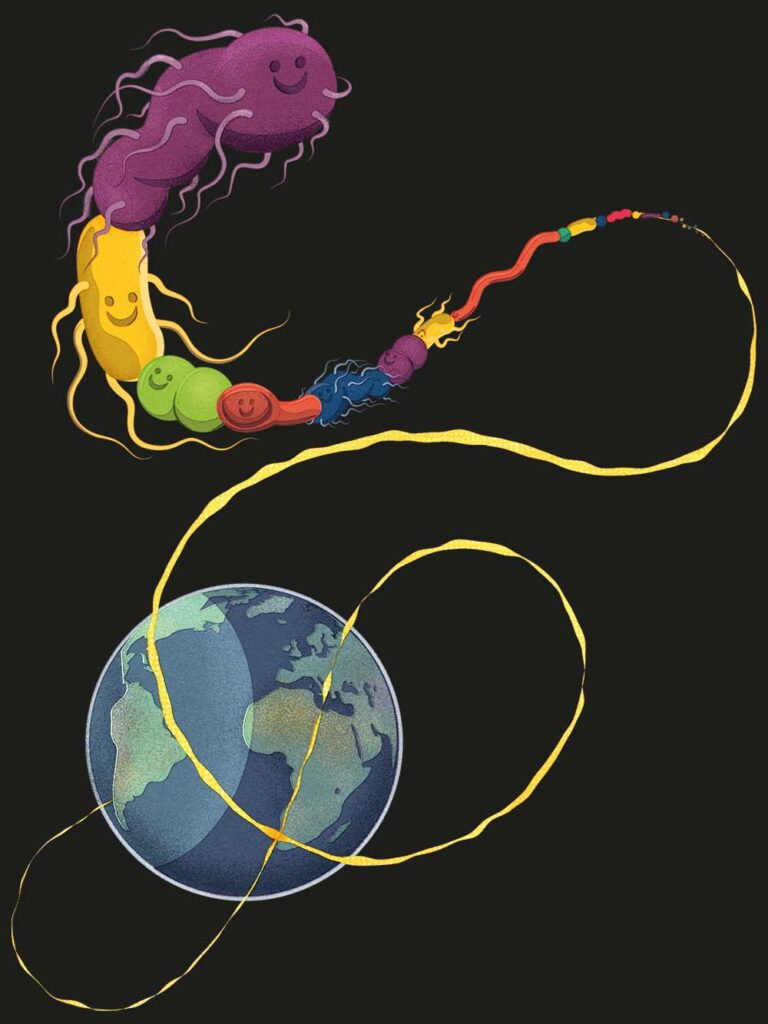QUESTION OF THE MONTH:
If you put all the germs (and bacteria) in the world on top of each other, would we be able to see them?
TOM SHEPHERD, BRISTOL

Between bacteria an archaea (another type of single-celled microbe), there are more than 1030 individual cells. Although most are about one micrometre long (0.001mm), it’s such a colossal number that, laid end-to-end, they would stretch for 10 billion light-years! This bacteria thread would still be difficult to see, because one micrometre is about 75 times thinner than a human hair. But if you wrapped the thread around the Milky Way, it would encircle it more than 20,000 times, creating a 2cm-wide ribbon that might catch enough light to be visible to the naked eye.
Statistics like this show just how bad we are at visualising large and small amounts. Ten billion light-years is an unfathomable length, but if we packed all the bacteria into a cube (and it didn’t collapse under its own weight) it would only be around 10km on each side, which seems much more manageable. In reality, up to 80 per cent of all the bacteria in the world are found in biofilms on rocks, in the soil, on stagnant water and in virtually every other habitat, including your mouth and intestines. These biofilms are a few hundred bacteria thick and can contain bacteria, archaea and fungi of various species banding together in a kind of city. You can see biofilms whenever you clean your house. The red, black or brown slime on your shower head, under the rim of the toilet or on the draining rack on the kitchen sink are all bacterial biofilms, each consisting of tens of millions of bacteria. LV
WINNER

The winner of next issue’s Question Of The Month wins an ESR Halo Lock Kickstand Wireless Power Bank, worth £59.99, which enables you to charge your phone wirelessly while watching videos or Face Timing. esrgear.com
Email your questions to
questions@sciencefocus.com
or submit on Twitter
@sciencefocus